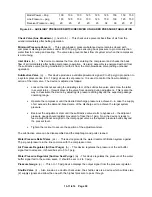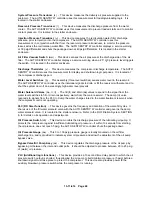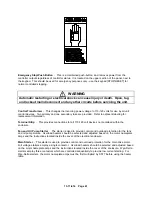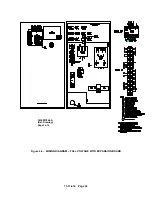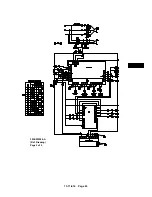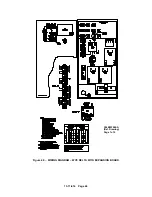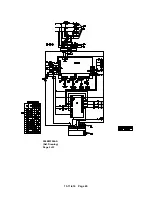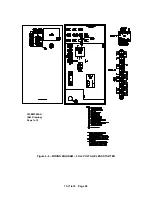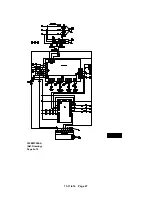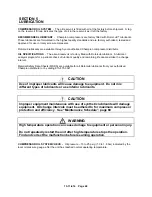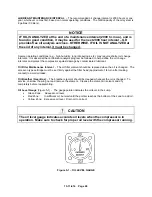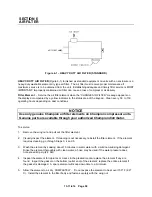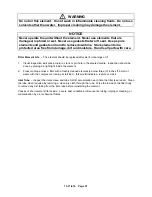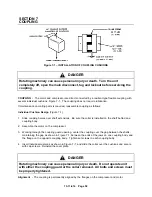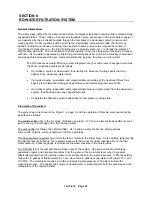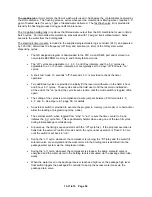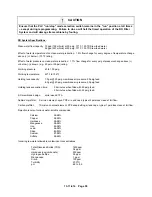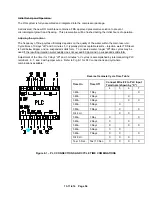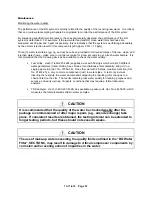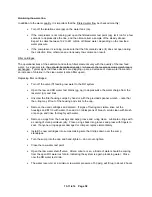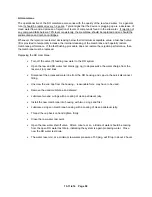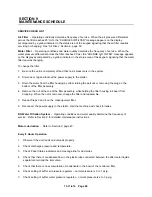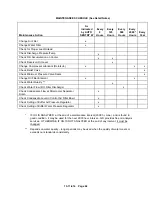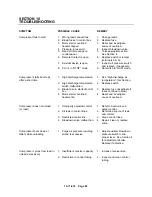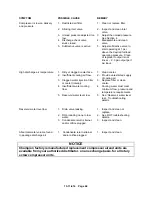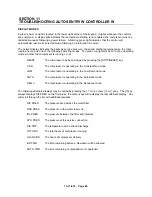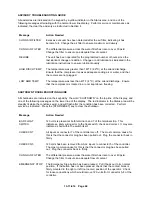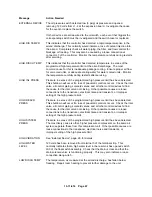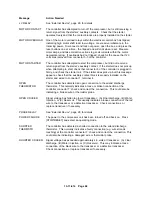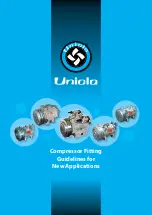
13-11-614 Page 53
SECTION 8
RO WATER FILTRATION SYSTEM
General Information:
The water mass utilized by the water-flooded screw compressor typically contains solids in dissolved and
suspended forms. These solids, of organic and inorganic nature, are present in the local water supply or
are deposited by the air stream pumped through the compressor, and usually contain corrosive and
fouling agents. Under conditions which promote the precipitation of dissolved solids, the latter may
deposit on adjacent surfaces and disrupt the transfer of heat in cooler cores, impede the motion of
mechanical components (e.g., the inlet throttling valve, solenoid valves, etc.), or abrade the surface of
shaft sealing elements. The concentration of solids residing in the close-loop water mass also increases
with time. As the water evaporates by interacting with atmospheric air, and as the solubility of hardness-
causing agents decreases with heat, solids precipitate and increase their amount in the water.
The RO (reverse osmosis) filtration system integrated into your compressor package overcomes
the above-mentioned problems as follows:
•
It provides a source of clean water, thus limiting the amount of fouling agents that may
appear in the close-loop water mass.
•
It provides regular, repeatable, and programmable exercising of the treatment filters, thus
keeping their elements working at peak efficiency and prolonging their service life.
•
It provides regular, repeatable, and programmable means to drain water from the close-loop
system, thus flushing away any suspended solids.
•
It operates the filtration system independent of compressor running state.
Principles of Operation:
The system layout is shown in the Figure 1-4, page 9, and the operation of its main components will be
described as follows:
The sediment filter (hh) is the 1st stage of filtration provided. Its 5-micron element traps sediments such
as silt, sand, grit, and sludge from the raw feed water.
The carbon filter (ii) follows the sediment filter. Its 10-micron element absorbs, among various
compounds, chlorine, which is harmful to the RO membrane.
The back-pressure regulator (jj) controls the feed of water to the RO system. As the holding tank (nn) fills
and water pressure builds up, the regulator stops water flow once the latter reaches 65% of the feed
water pressure. Pressure gauge (xx) indicates the water pressure in the holding tank.
The RO filter (kk) is the last and finest filtration step of the system. Its semi-permeable membrane
separates organic and inorganic impurities from the water, at the molecular level, when a pressure
differential greater than the osmotic pressure of said impurities in the water is present. It fills the holding
tank with 3.0 gallons of filtered water in 1 hour, when fed 6.6 gallons of raw water at 90 psig, 70
°
F, and
150 TDS. The membrane requires a minimum raw feed water pressure of 50 psig to sustain the
cleansing process. The quality and volume of treated water is proportional to both the pressure and the
temperature of the raw feed water.
Summary of Contents for ROTORCHAMP EWF99C-100
Page 7: ...13 11 614 Page 7 Figure 1 2 PACKAGE ILLUSTRATION AIR COOLED 309EWF797 A Ref Drawing ...
Page 8: ...13 11 614 Page 8 Figure 1 3 PACKAGE ILLUSTRATION WATER COOLED 310EWF797 A Ref Drawing ...
Page 9: ...13 11 614 Page 9 Figure 1 4 AIR COOLED SCHEMATIC 307EWF797 A Ref Drawing ...
Page 10: ...13 11 614 Page 10 Figure 1 5 WATER COOLED SCHEMATIC 308EWF797 A Ref Drawing ...
Page 29: ...13 11 614 Page 29 Figure 4 2 FLOW CHART FOR SETUP PROGRAMMING 300EWC1255 Ref Drawing ...
Page 43: ...13 11 614 Page 43 303EWF546 A Ref Drawing Page 2 of 2 ...
Page 45: ...13 11 614 Page 45 304EWF546 A Ref Drawing Page 2 of 2 ...
Page 47: ...13 11 614 Page 47 305EWF546 A Ref Drawing Page 2 of 2 ...

